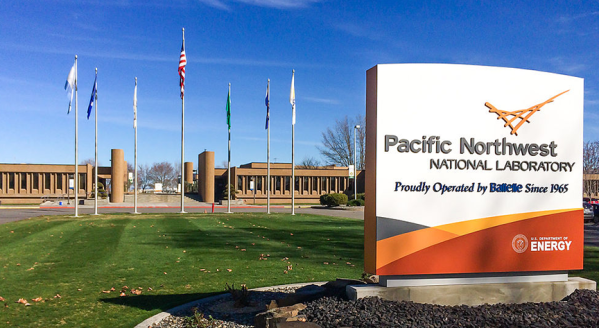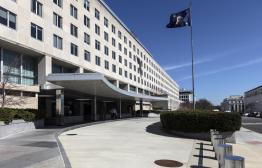- Sponsored
- Insights
How cloud modernization helps FERC streamline its regulatory processes

Upgrading and expanding the nation’s electrical grid isn’t just about meeting America’s growing electrical demands; it’s about powering our economy, securing national security, and ensuring a cleaner future for future generations. But because so much of that infrastructure lies mainly in private hands, orchestrating that effort requires extraordinary attention.
That is one of the roles of the Federal Energy Regulatory Commission (FERC), an independent agency within the Department of Energy that regulates the interstate transmission of electricity, natural gas, and oil. FERC also reviews and licenses liquified natural gas terminals, hydropower projects, and pipelines.
Ensuring that the companies building and operating power plants, pipelines and transmission lines adhere to safety standards, comply with environmental laws, and abide by market-based pricing guidelines requires an extensive review and approval process. And because FERC relies on approximately 1,570 employees to perform that work, technology plays a critical role in keeping on top of all those entities’ requests.
The challenge: Legacy technology

FERC’s technology systems, however, like those at many federal agencies, have been hard-pressed to keep up with ongoing and emerging demands. Most of those systems used to manage the core applications the agency depends on are more than ten years old and stove-piped, according to Michelle Pfeifer, Director of Solutions Delivery and Engineering.
Among other challenges, the workload management systems used to process and manage filings from regulated entities operate on outdated, customized platforms, leading to inefficiencies in tracking and managing the significant number of filings the agency must handle, said Pfeifer, who joined FERC four years ago. “We have done some updates, but there are a significant number of requests for refresh or modernization that have not been addressed. Additionally, data had to be entered into multiple systems, compounding workload challenges,” she said.
The search for a better solution
FERC’s IT team recognized the solution required more than a technology refresh. So they decided to launch an “application layer modernization program to address pent-up demand from our customers, address the stovepipe nature of multiple applications, and do it more quickly and flexibly through an agile delivery process. And we definitely wanted a cloud-based solution,” she said. “We also were looking at — instead of custom development, which is what we had — going to more of a low-code, no-code solution that gives us more pre-built capability. “
After evaluating a series of vendor demonstrations and completing the acquisition process, FERC’s IT team selected Microsoft’s Power Platform, a set of low-code tools that help create and automate solutions, to modernize the applications. After conducting an application rationalization review, FERC defined a phased approach to modernize its applications. The first phase, which is complete, developed a Virtual Agenda system that supports the Commission voting process on energy matters. FERC is now in the second phase, migrating its workload management and hydro project systems. All the modernized systems operate on Microsoft Azure Government Community Cloud (GCC) environments, according to Pfeifer.
Wholesale improvements
The first phase of modernization efforts, which went live in August, has already led to improvements for FERC employees, according to Pfeifer.
“The biggest improvement areas were greater integration of the workflows within the new system,” she said. Right away, there was less rekeying of data and fewer manual errors. Another significant improvement was “the automated generation of fields or documents that had previously been done manually,” she explained.
The new layer of automated workflow tracking provides more comprehensive visibility into the status of FERC dockets and reviews, which eventually flow up for final decisions by FERC’s five-member board of commissioners. The new system has replaced and consolidated a separate set of Microsoft Sharepoint sites used by the chairman and the commissioners’ staff to track projects in circulation before coming up for Commission decisions.
Externally, as part of future phases, regulated entities will find it easier to submit filings and requests, said Pfeifer. She acknowledged there’s more work to be done to improve FERC’s customers’ overall user experience. However, the cloud-based applications are already improving the agency’s ability to maintain the application and analyze data associated with the Commission proceedings — and puts FERC in a stronger position to leverage AI, said Pfeifer.
Lessons learned
One of the key lessons that helped accelerate FERC’s modernization efforts, according to Pfeifer, was using the acquisition process differently.
“We used some more advanced acquisition techniques — we requested a demo, for instance, as well as did a ‘Tech Challenge’ — which allowed us to see not just a paper document in response to a proposal, but a demo of a solution. That allowed us to work with (different vendor’s teams) to see how they would work together.” The tech challenge also included a tech talent component on top of the demo, “where vendors had to change something (so we could) see how they would go about doing that, what experience they had and what the team was capable of configuring and delivering,” she said.
Another lesson she stressed was the importance of business process mapping and reengineering “so that we could help our customers (define) what they want the processes to do. How do they want the processes to improve? We wanted to model that technically, not model the old processes that they weren’t happy with.”
That would also help the IT team implement the modernization efforts in phases, which was essential to ensuring the transition process went smoothly and minimized disruption to FERC mission.
Added benefits
While measuring the impact of modernizing and migrating to cloud services isn’t always straightforward, Pfeifer sees a number of operational benefits.
“Just to keep track of the status of things requires a lot of side spreadsheets and reports that aren’t part of the actual workflow (and will be incorporated into the FERC workload processing). Having a more streamlined workflow process also allows the user base to understand the due dates and ensure they’re meeting them, which once required substantial effort from the program offices to do that within the existing applications,” she explained.
The other area that I see a lot of benefit in is consistency in how things are defined and managed, and handled across the different offices within FERC,” which in turn, leads to greater accuracy for decision-making.
Finally, Pfeifer sees these back-end improvements laying the foundation for modernizing the agency’s front-end experience for the regulated entities that rely on FERC, in line with the administration’s executive order on transforming the federal customer experience and service delivery.
“Modernization is hard to achieve because you have to replicate the capabilities of the existing systems — and improve on those capabilities at the same time,” concluded Pfeifer. “That said, sometimes the technical solution is the easier part of the solution.”
This report was produced by Scoop News Group for FedScoop as part of a series on technology innovation in government, underwritten by Microsoft Federal.






